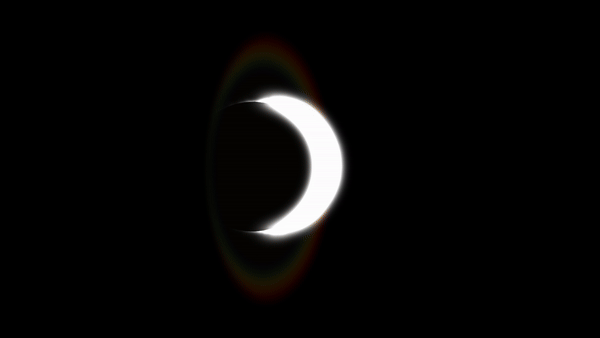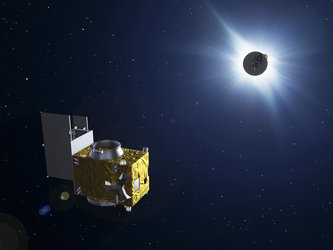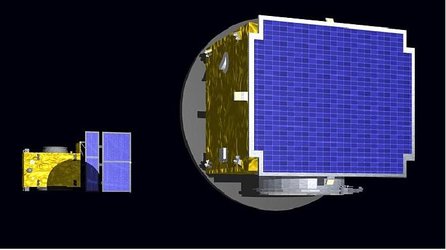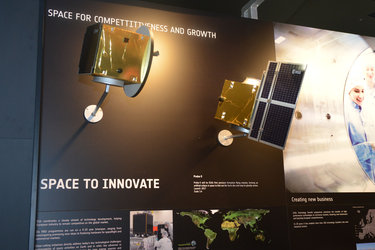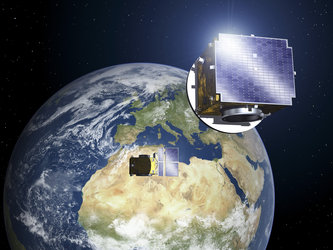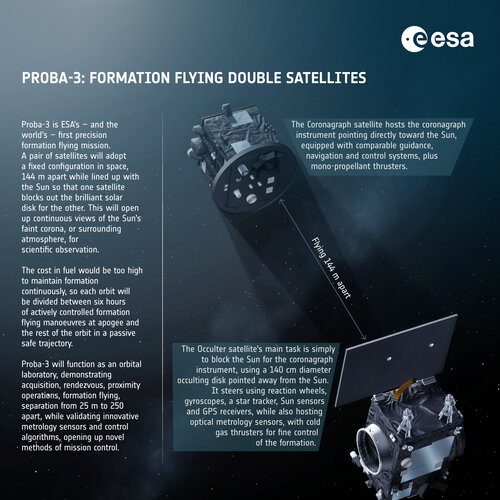ESA's solar eclipse maker, Proba-3
Hundreds of millions of people will witness next week’s total solar eclipse across North America, and solar physicists from around the globe are flocking to join them. Eclipses offer a brief glimpse of the Sun’s ghostly surrounding atmosphere – the solar corona – normally kept invisible by the Sun’s sheer glare. But the corona will soon be opened up for more sustained study: today in Belgium ESA has unveiled the pair of spacecraft making up its new Proba-3 mission, planned to produce orbital solar eclipse events on demand.

Proba-3’s Occulter spacecraft will fly around 150 m away from the second Coronagraph spacecraft, shown to media today at the Redwire Space facility in Kruibeke, Belgium, where they are undergoing pre-flight testing. The pair will line up with the Sun so precisely that the Occulter casts a shadow onto the face of the Coronagraph, blanking out the Sun to reveal the corona.
“The two spacecraft will act as if they are one enormous 150-m long instrument,” explains Dietmar Pilz, ESA Director of Technology, Engineering and Quality. “Achieving this will be extremely technical challenging however, because the tiniest bit of misalignment and it won’t work. The development process has been correspondingly long – undertaken by a consortium of smaller ESA Member States led by Spain and Belgium – so I am very pleased to see Proba-3 here today, being prepared for launch.”
Producing artificial solar eclipses in orbit
The underlying idea is not new: a cylindrical Apollo capsule attempted to do the same for a Soviet Soyuz spacecraft during the Apollo-Soyuz Test Project in 1975. But the aim with Proba-3 is to produce these artificial eclipses routinely through precise formation flying, for up to six hours at a time per 19 hour 36 minute orbit.

Solar eclipses occur due to a remarkable cosmic coincidence: the Sun is 400 times bigger than Earth’s Moon, but it is also precisely 400 times further away. This means when the two bodies are aligned precisely in space, the Moon covers the Sun’s fiery face, revealing the solar corona, extending millions of kilometres from our parent star.
Rarely seen region of our Solar System
This rarely seen region of our Solar System is of interest both scientifically and practically: a million degrees warmer than the surface of the Sun beneath it, the corona gives rise to the solar wind and space weather, along with violent ejections known as ‘coronal mass ejections’ that drive space weather and solar storms, potentially impacting both satellites in orbit and terrestrial power and communications networks.
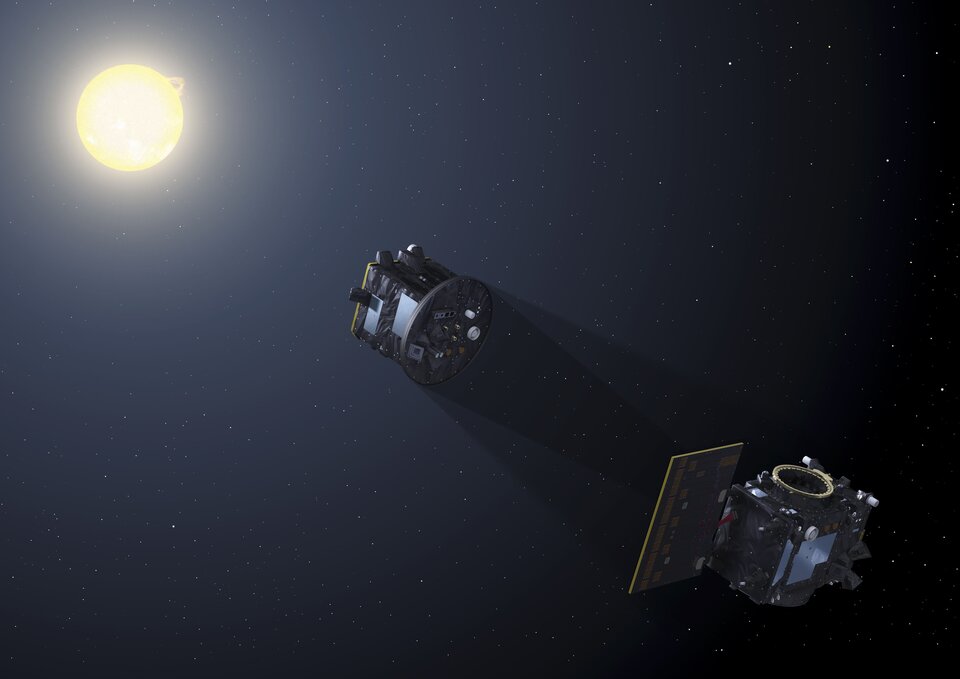
To see more of the corona, specialised telescopes on the ground and in orbit called ‘coronagraphs’ can incorporate ‘occulting disks’ – carefully engineered shields to cover the Sun within their field of view, mimicking a solar eclipse. But their effectiveness is limited by a phenomenon called ‘diffraction’, where stray light spills over the edges of coronagraphs. The way to minimise this effect is to move the occulting disk much further apart from the observing coronagraph – but practical limits on the size of spacecraft rendered that solution impractical for space.
Performing like a single rigid spacecraft
Until now, that is. By flying the two spacecraft in precise formation down to millimetre accuracy, Proba-3’s main ASPIICS (Association of Spacecraft for Polarimetric and Imaging Investigation of the Corona of the Sun) instrument will yield data as if it were aboard a single rigid spacecraft, opening up a previously elusive region of study between 3 and 1.1 solar radii out from the Sun.
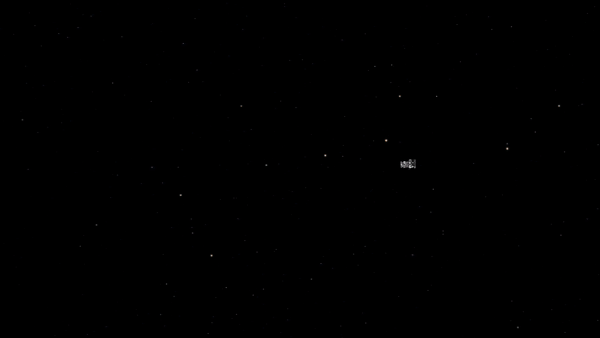
This accuracy will be obtained by combining a suite of progressively more precise positioning technologies: satellite navigation; radio-based inter-satellite links, visible-light cameras homing in on LEDs and finally a laser beam reflected between spacecraft. Proba-3’s second instrument is a radiometer measuring the Sun’s total energy output, important for climate modelling.
Fully autonomous formation flying
The formation flying will take place on a fully autonomous basis, towards the top of each 60 000 km altitude orbit, where gravitational, atmospheric and magnetic perturbations are minimised. The rest of the time the pair will spend the rest of their orbit in passive safe drifting.
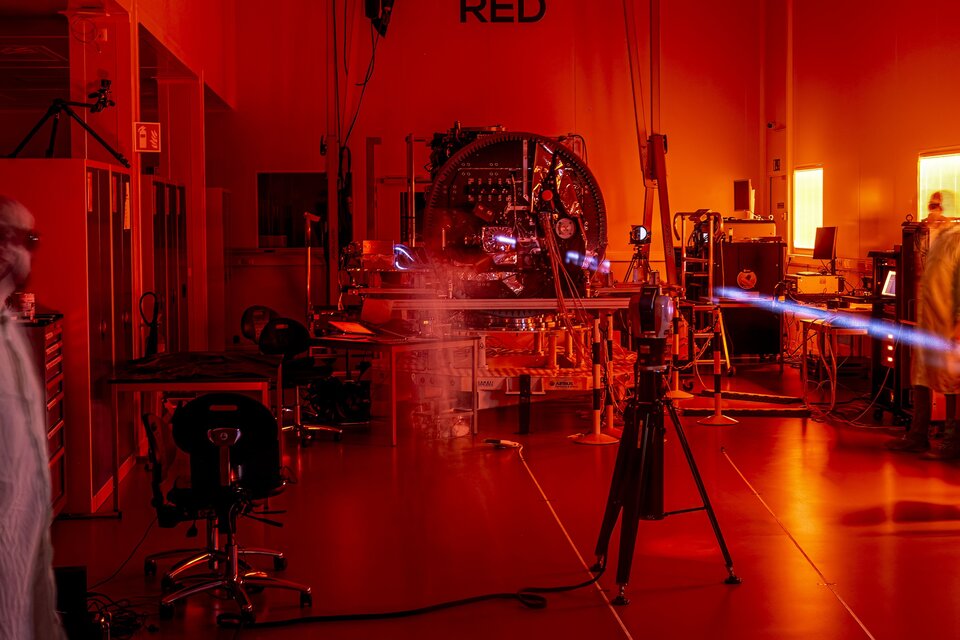
As with all of ESA’s Proba family of technology demonstration missions, the proof of success with be in the quality of the science data produced.
Enabling new types of space missions
Successfully achieving precise formation flying would enable a whole new era for science and applications. Missions could be flown that are much larger than any single spacecraft – such as giant in-orbit radio and optical interferometry arrays – while precise orbital rendezvous would make in-orbit satellite servicing feasible, extending the lifetime of space infrastructure.
Meanwhile members of Proba-3’s science team are taking advantage of the North American total solar eclipse to test out hardware designed for the mission: polarising filter wheels used in ASPIICS, as well as an alternative LED technology.



